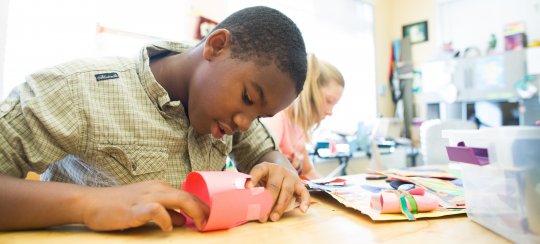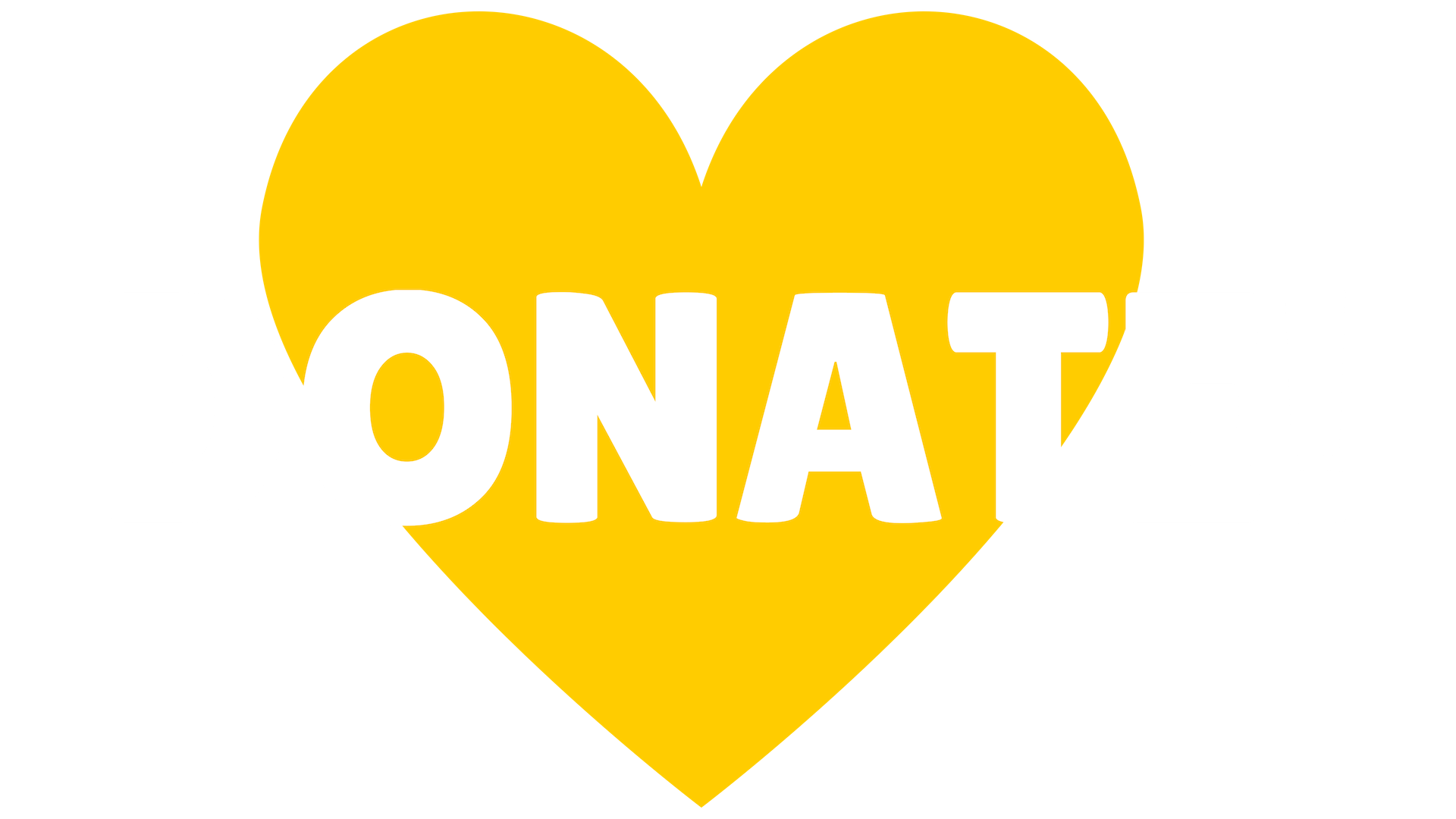By the end of this lesson students will be able to make choreography choices that reflect the words and phrases in a poem.
LESSON OVERVIEW
| Steps |
Pacing: 60 Minutes |
|
|
20 Minutes |
|
|
40 Minutes |
*Pacing depends on the poem selection process. If using a more involved process, feel free to stop the lesson after poems are selected and begin again with Step 4.
Standards Alignment
Reading Standards (Literature)
RL 3.4: Determine the meaning of words and phrases as they are used in a text, distinguishing literal from nonliteral language.
RL 3.5: Refer to parts of stories, dramas, and poems when writing or speaking about a text, using terms such as chapter, scene, and stanza; describe how each successive part builds on earlier sections.
RL 4.4: By the end of the year, read and comprehend literature, including stories, dramas, and poetry, in the grades 4–5 text complexity band proficiently, with scaffolding as needed at the high end of the range.
RL 4.5: Explain major differences between poems, drama, and prose, and refer to the structural elements of poems (e.g., verse, rhythm, meter) and drama (e.g., casts of characters, settings, descriptions, dialogue, stage directions) when writing or speaking about a text.
RL 5.4: Determine the meaning of words and phrases as they are used in a text, including figurative language such as metaphors and similes.
RL 5.5: Explain how a series of chapters, scenes, or stanzas fits together to provide the overall structure of a particular story, drama, or poem.
Speaking & Listening
SL 3.1a: Come to discussions prepared, having read or studied required material; explicitly draw on that preparation and other information known about the topic to explore ideas under discussion.
SL 3.1b: Follow agreed-upon rules for discussions (e.g., gaining the floor in respectful ways, listening to others with care, speaking one at a time about the topics and texts under discussion).
SL 3.1c: Ask questions to check understanding of information presented, stay on topic, and link their comments to the remarks of others.
SL 3.1d: Explain their own ideas and understanding in light of the discussion.
SL 3.6: Speak in complete sentences when appropriate to task and situation in order to provide requested detail or clarification.
SL 4.1a: Come to discussions prepared, having read or studied required material; explicitly draw on that preparation and other information known about the topic to explore ideas under discussion.
SL 4.1b: Follow agreed-upon rules for discussions and carry out assigned roles.
SL 4.1c: Pose and respond to specific questions to clarify or follow up on information, and make comments that contribute to the discussion and link to the remarks of others.
SL 4.1d: Review the key ideas expressed and explain their own ideas and understanding in light of the discussion.
SL 4.6: Differentiate between contexts that call for formal English (e.g., presenting ideas) and situations where informal discourse is appropriate (e.g., small-group discussion); use formal English when appropriate to task and situation.
SL 5.1a: Come to discussions prepared, having read or studied required material; explicitly draw on that preparation and other information known about the topic to explore ideas under discussion.
SL 5.1b: Follow agreed-upon rules for discussions and carry out assigned roles.
SL 5.1c: Pose and respond to specific questions by making comments that contribute to the discussion and elaborate on the remarks of others.
SL 5.1d: Review the key ideas expressed and draw conclusions in light of information and knowledge gained from the discussions.
SL 5.6: Adapt speech to a variety of contexts and tasks, using formal English when appropriate to task and situation.
Reading Standards (Literature)
RL 3.1: Ask and answer questions to demonstrate understanding of a text, referring explicitly to the text as the basis for the answers.
RL 4.1: Refer to details and examples in a text when explaining what the text says explicitly and when drawing inferences from the text.
RL 5.1: Quote accurately from a text when explaining what the text says explicitly and when drawing inferences from the text.
Teaching Resources
-Unit 5, Tracks: “BrainDance of Words" #
1,
2,
3, and
4 by Debbie Gilbert
-Laptop or Tablet
-Speakers (Optional)
Unit 5 includes the following Life & Learning Skills:
-Reflective thinking
-Creative problem-solving
-Critical and analytic thinking
-Collaboration Communication
 Differentiation Options
Differentiation Options
Differentiation Options will appear throughout the unit to suggest ways to scaffold or challenge student learning. Use the number of helping hands to select the level of differentiation that best supports student learning.


 Highest level of scaffolding. Select this option if students are learning strategies for the first time, if the text is challenging for them, or if students require more guidance during activities. Part 1 lessons are written for the highest level of scaffolding.
Highest level of scaffolding. Select this option if students are learning strategies for the first time, if the text is challenging for them, or if students require more guidance during activities. Part 1 lessons are written for the highest level of scaffolding.

 Moderate scaffolding. Select this option if students require some support comprehending the text or navigating the activity.
Moderate scaffolding. Select this option if students require some support comprehending the text or navigating the activity.

Least amount of scaffolding/Extending the instruction. Select this option if students are ready to work more independently, move more quickly through the material, or are ready for additional challenge.
 Leveraging Moments
Leveraging Moments
Key instructional steps where the arts are used to leverage literacy-learning (and vice versa) are marked with  . Smaller leveraging moments also occur throughout the lessons.
. Smaller leveraging moments also occur throughout the lessons.
Process: Give an overview of the lesson objectives: Read final drafts of poems, select poems for Words in Motion! dances, and begin to choreograph dances.
Step Alternatives: Performance Options
Select one of the options listed below or structure the performance in a way that appropriately meets students’ needs and fosters engagement.
1. Groups select 1 poem to perform. The group choreographs and performs all or part of the poem. This option requires the least time planning and performing.
2. Each student reads his/her poem aloud. The group stands behind the poet and dances 1 or 2 lines from the poem. This option allows all poems to be read, but limits time required for choreographing and performing.
3. Each student has his or her poem performed. This can be motivating, but it is the most time consuming option.
Suggested Dialogue
"Today we’ll read aloud the final drafts of our poems. Then each group will select one poem for the Words in Motion! performance, and we’ll begin choreographing dances using concepts we’ve learned throughout the unit."
"By the end of today’s lesson, you will be able to say, 'I can make choreography choices that reflect the words and phrases in a poem'.”
Process: Students get into their poetry writing groups with their Notebooks. Each student reads the final draft of his or her poem aloud. Encourage students to read with prosody for the whole poem or selected words and phrases. After each student reads, each member of the group reflects on one “wow” for a word or phrase that evoked a feeling, image, or response.
Process: Each group selects one poem for their Words in Motion! dance. Guide groups to make decisions using one of the options the menu below. Announce which poem will be choreographed for the Words in Motion! dance. Once groups have their poems, guide them to discuss the feelings, images, and responses the poem evokes. Have them review the Movement Chart and discuss potential movement choices to show those feelings and images.
Teaching Tip: Options for Selecting Student Poems
Groups select the poem they will choreograph
- Anonymously, students in groups write their first choice on a piece of paper, and the teacher tallies the choices
- Groups rank their choices (1, 2, 3) and the teacher makes the final decision—perhaps incorporating the rubric
- Teacher selects poem for each group to choreograph
- Teacher pulls a name out of a hat for each group
Process: Transition to dance and move desks. Designate an area where students can easily access their A4L Student Notebooks.
Suggested Dialogue
"When I say 'Go,' move the desks and put your Notebooks in the designated area. Then find an empty space in the room for our BrainDance warm-up. Go!"
Process: Lead the students in one of the four BrainDances of Words. Below are the cues for BrainDance #4, but feel free to select one of the other BrainDances. Students stand at the sides of their desks. Use the audio track with verbal cues and musical accompaniment for the BrainDance. If desired, instead of using the audio track, use the verbal cues below to guide students through the BrainDance. This can be facilitated as a generic BrainDance without descriptive words, with descriptive words, with or without music.
Suggested Dialogue
Warming Up with BrainDance
"We’ll start by warming up our bodies and brains with the BrainDance to prepare us to choreograph our Words in Motion! dances.
Breath: Breathe quietly.
Tactile: Bouncily tap your head, your arms, your fronts, your backs, your legs, and your feet.
Core-distal: Expand your body into an enormous shape and contract into a miniscule shape.
Head-tail: Ripple your body forwards and backwards and from side to side.
Upper half: Freeze the lower half of your body. With the top half of your body, move suddenly.
Lower half: Freeze the top half of your body. With the lower half of your body, move gently.
Body-half right: Freeze the left side of your body. With the right side, move playfully.
Body-half left: Freeze the right side of your body. With the left side, move nervously.
Eye-tracking: Follow your right thumb with your eyes. Move it angrily from side to side. Follow your left thumb with your eyes. Move it unhurriedly from side to side.
Cross-lateral: Purposefully reach your arms across the front of your body on different levels.
Vestibular: Aggressively spin and then freeze in a hopeful shape.
Breath: Breathe quietly."
Process: Describe the process for creating choreography for Words in Motion! dances. Post the Guidelines for Choreography & Prosody (see menu belwo and this additional resource page). Model, with students’ help, how to break the poem into sections for choreography (see menu Guidelines for Breaking the Poem into Sections for Choreography). Make a decision on how to incorporate prosody into the dances. Groups can incorporate prosody as they choreograph or they can choreograph the entire poem and then add prosody. Also, see the sidebar Options for Prosody During Words in Motion! Dance.
Teaching Tip: Options for Prosody During Words in Motion! Dance
Speaking while dancing may, or may not, be challenging for students. Below are options to incorporate prosody into the dances.
- Read the poem before dancing.
Students read the poem with prosody before the dance. This can be a choral reading or with individuals and/or pairs being responsible for different parts of the poem. Students dance. Then, finish with a re-reading of the poem. By hearing the poem before and after the dance, the audience is able to apply what they saw to the meaning of the poem.
- Read the poem before dancing and repeat key words during dance.
Students read the poem with prosody before the dance. Students say specific words (as many as they can manage) that enhance the meaning of the poem, while they are dancing. They can read the poem again when they are finished dancing.
- Say each line while dancing
Students say each line or section of the poem chorally (all at the same time) as they dance.
- Divvy up responsibility for lines
Either individually or in pairs, students say different words, phrases, lines, or sections of the poem while they dance.
Guidelines for Choreography & Prosody
Ask yourself the following questions as you create your dance with shape, movement, and vocal choices.
- What movement and shape choices will help you show the feelings and images in the poem?
- Will you say the lines of the poem before or during the dance?
- How will you say the lines to communicate the images and feelings and to support your movement choices?
- Will you repeat any movements?
Teaching Tip: Guidelines for Breaking the Poem into Sections for Choreography
Group lines together that:
- Introduce the poem’s topic and mood Read More...
- Present a complete thought
- Contrast with other lines
Separate lines that:
- Convey an important idea that you want the reader to notice especially
- You want to highlight with a particular movement
Suggested Dialogue
Introduce Choreographing Poems
"You now have all the tools you need to choreograph your own poems! You are going to use all our dance concepts to make choices and choreograph a dance of your free-verse poem. This is similar to the process you went through when you choreographed words and phrases from poems, but this time you will dance your whole poem!
To begin, you’ll break your poem down into sections. To identify a section, look for feelings, images, or ideas that go together. A section can be one line or a cluster of two or more lines. Then for each section you will create shapes and movements. Let’s do this together with one of the poems in our Unit 5 Texts."" (Select “hose” by Valerie Worth or a different poem. Model breaking a poem into sections on the document camera.)
"Where does the first feeling, image, or idea begin and end? Why do you think this? Pair-share with a partner. (Students pair-share.) Let’s share some ideas with the whole group." (2–3 students share.)
"It looks like there are three images in the poem. We can put a line below each image and seek how to section our own poems for the choreography. I’ll put a line underneath, 'In the mud,' and 'Across the yard,' and 'Over soft fog'."
Explaining How to Make Choreography Decisions
"Like your previous dances, you’ll have a beginning shape, movement, and an ending shape. However, this time, since you’re dancing the whole poem, you will have more movements–something like shape, movement, movement, movement, movement, shape. Your first section will begin with the beginning shape. The next sections will each be a movement. The last section will end in a shape."
"Look at the Guidelines for Choreography & Prosody chart. (Point to chart posted in the classroom.) It lists questions you should ask yourself as you create your dance with shape, movement, and vocal choices so that your decisions show the meaning of the words and phrases in the poem. Who would like to read a question?" (Students respond.)
 Process:
Process: Groups need a copy of the poem and a pencil. Each student can have a copy and make notes, or groups can work with one copy. Groups divide the poem into sections. Guide groups to choreograph the first section creating the beginning shape and the first movement and then make choices on how to add prosody to the words and phrases. If desired, as groups work have them make notes on the Choreography Preparation Chart on
page 26 in their Notebooks.
Suggested Dialogue
Facilitate groups dividing the poem into sections.
"With your group, divide your poem into sections. Each section should reflect one feeling, image, or idea. It might be one line or a cluster of two or more. This is a start. It’s okay if you change your mind once you’re dancing." (Students divide poem into sections.)
Facilitate groups discussing how and when to incorporate prosody.
"With your group, decide if you want to speak the poem before or during the dance. If you decide to speak during your dance, you can make prosody choices while you’re choreographing, after you finish a section, or after you finish choreographing the whole poem. If you decide to speak the poem before your dance, think about how you might use your voice while you’re choreographing." (Groups discuss.)
Facilitate groups choreographing the beginning of the poem.
"Create your beginning shape. Will you all make the same shape or will you all make different shapes? (Students create beginning shape.)
Choose the movement for this section. Look at the choreographer’s chart. Think about how you will use self and/or general space, levels, and smooth and/or sharp energy to show your idea. If you’re speaking during your poem, how will you say your words?" (Students choreograph and rehearse.)
Process: Restore the room to its original state. Tell students how and where to move the desks and where you want them to go once they’re finished.
Process: Close the lesson with a look forward describing the next lesson.
Suggested Dialogue
"Next, we’ll continue to choreograph our poems and pick music for the dances."
Performing The Closing Ritual (Optional)
"To close our theater lessons, we'll appreciate our work and each other with a unified clap.
On three we'll all clap once and say, 'Huh!' 1-2-3 (clap) Huh!"
CONGRATULATIONS ON COMPLETING LESSON 12! YOU ARE NOW READY TO MOVE ONTO LESSON 13 OF UNIT 5.

 Differentiation Options
Differentiation Options ![]() Leveraging Moments
Leveraging Moments
